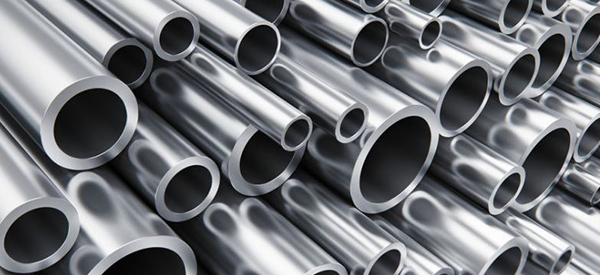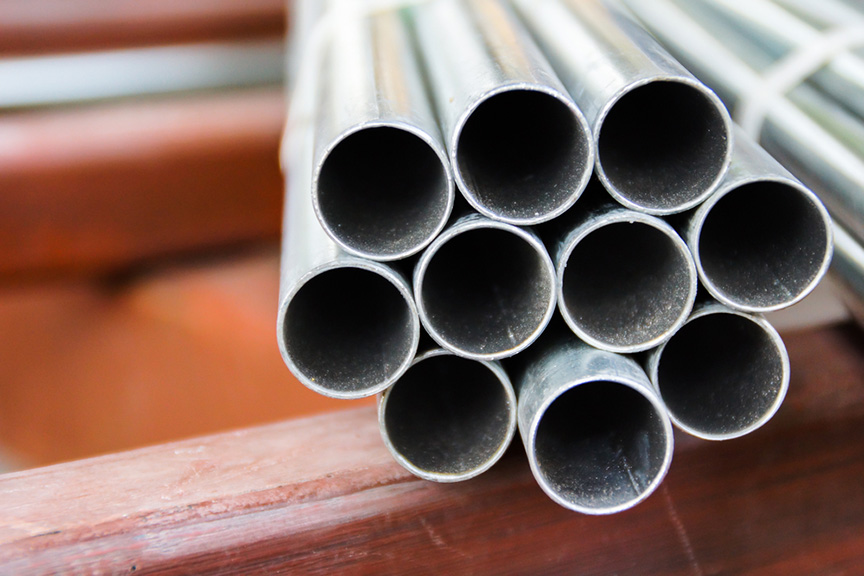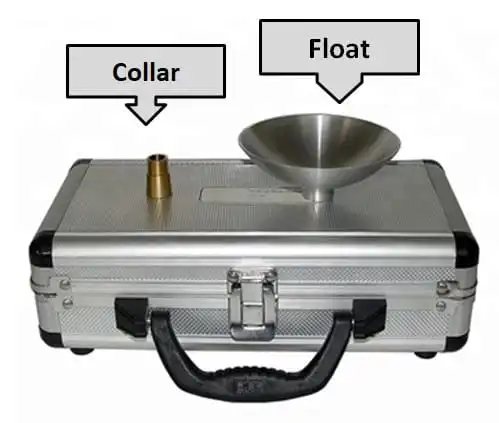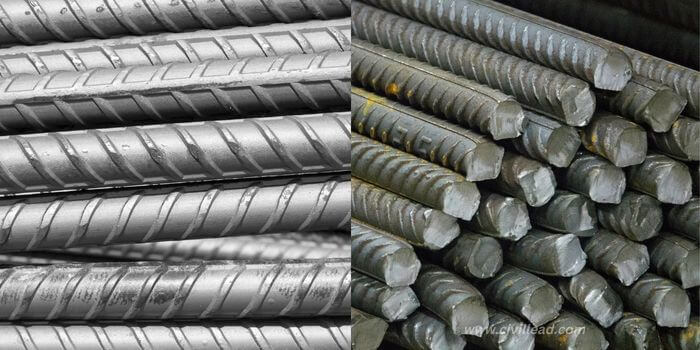Steel is a highly used material in engineering and construction. Steel, an iron-based metal alloy that is hard, robust, and bluish-gray, is one of the materials that is used the most extensively worldwide.
Various steel types are produced with carbon contents ranging from 0.2 to 2.1 percent (by weight), based on their composition and physical characteristics.
While carbon is the main component of steel, it also contains minor amounts of silicon, phosphorus, oxygen, tungsten, chromium, and vanadium as alloying elements.
The primary uses of steel are as structural and fabrication materials. Carbon and other alloying materials are used in the production of steel to provide hardening and stop iron atom dislocations.
The quantity and kind of alloying elements present in iron determines the essential qualities of steel, such as its tensile strength, ductility, and hardness.
Steel becomes stronger and harder as its carbon content rises, but it becomes less ductile. Steel is an adaptable, robust, and durable material.
Steel’s ability to be recycled repeatedly without losing its qualities is its greatest benefit. One of the most important building, infrastructure, and bridge building materials is steel, which is also used in home appliances. The steel industry is essential to the growth of the economy.While carbon is the main component of steel, it also contains minor amounts of silicon, phosphorus, oxygen, tungsten, chromium, and vanadium as alloying elements.
The primary uses of steel are as structural and fabrication materials. Carbon and other alloying materials are used in the production of steel to provide hardening and stop iron atom dislocations.
The quantity and kind of alloying elements present in iron determine the essential qualities of steel, such as its tensile strength, ductility, and hardness.
Steel becomes stronger and harder as its carbon content rises, but it becomes less ductile. Steel is an adaptable, robust, and durable material.
Steel’s ability to be recycled repeatedly without losing its qualities is its greatest benefit. One of the most important building, infrastructure, and bridge building materials is steel, which is also used in home appliances. The steel industry is essential to the growth of the economy.

Steel Types Used in Construction
According to composition, the main varieties of steel are as follows:
- Steel carbon
- Special steel
1. Carbon steel:
Less than 1% carbon is often disputed, together with traces of silicon, phosphorus, sulphur, and manganese in carbon steel.
The carbon content of steel determines the majority of the qualities and features of carbon steel; alloying and residual elements have a little impact on this form of carbon. There are four other classifications for plain carbon steel.
The varieties of carbon steel are as follows:
- Low-carbon steel
- Medium-carbon steel
- High-carbon steel
- Extremely high-carbon steel
1. Low-carbon steel
The most often used grade of low-carbon steel has a carbon percentage of no more than 0.30. These steels have a greater ductile property than high-carbon steel and are easier to manufacture and weld.
2. Medium-carbon steel
The carbon content of medium-carbon steel is maintained between 0.30 and 0.45 percent. Hardness, tensile strength, and ductility all rise with increasing carbon content while decreasing with it.
However, because of the greater carbon content, welding and machining of this steel are more challenging than with low-carbon steel.
3. High-carbon steel
The carbon percentage of high-carbon steel ranges from 0.45 to 0.75 percent. Therefore, welding and machining this kind of steel presents a hurdle.
Therefore, heating is required for any kind of molding activity in order to achieve appropriate welds and to regulate the mechanical characteristics of steel after welding.
4. Extremely high-carbon steel
The carbon percentage of extremely high-carbon steel may reach 1.50 percent. Steel needs heat before, during, and after welding in order to manage its mechanical characteristics due to its high carbon content.
Therefore, its main use is in the manufacturing of strong steel goods like truck springs and metal cutting tools.
Carbon Steel Designation System
The Society of Automotive Engineers (SAE) and the American Iron and Steel Institute (AISI) have adopted a four-digit identification scheme. similar to ASTM A240
1XXX SAE
First digit:
- The first character of the number signifies whether the material is alloy steel or carbon steel.
- Carbon steel is denoted by a 1 and alloy steel by a 2–9.
Second digit:
The second number represents the steel modification.
0: Unmodified, pure carbon
One: Resulfurized
2 – Resulfurized and phosphorized
5 – Non-resulfurized, Mn over 1.0%
Final two numbers:
The last two figures indicate a 0.01% carbon content.
For instance:
SAE 1045: In which 1 denotes plain carbon steel (non-modified steel), which has a carbon content of 0.45%.
2. Steel Alloy
In order to achieve a desired physical feature or attribute, one or more elements other than carbon may be purposefully added to carbon steel to create alloy steel.
External elements that are often introduced include molybdenum, manganese, nickel, silicon, boron, chromium, boron, and vanadium. Two varieties of alloy steel exist.
These are the many kinds of alloy steel:
- Low-alloy steel
- elevated alloy steel
1. Steel with Low Alloys
The carbon percentage of low alloy steel is typically maintained at 0.25 percent, and often at 0.15 percent for certain welding purposes.
While aluminum, cobalt, copper, titanium, tungsten, tin, and zirconium are less frequent alloying elements, there are others, such as manganese, nickel, chromium, molybdenum, silicon, vanadium, and boron.
Low alloy steel is most often used to improve hardenability and boost corrosion resistance in certain conditions. One disadvantage is that welding low alloy steels is challenging.
The strength of the material rises if we reduce the carbon content to 0.10 percent while adding other alloying components.
2. Steel High Alloy
High-alloy steel is generally defined as steel that contains elements other than carbon and iron that make up more than 8% of the total weight.
In essence, high-alloy steel is made up of two chemical components, and the proportion of each element in the steel determines its characteristics.
Its main benefit is that it provides excellent dependability and good corrosion resistance. Nuclear power plants, heat exchangers, centrifugal separators, driers, pipelines, couplings, valves, bolts, exhaust gas desulfurization, petrochemical, pharmaceutical, and semiconductor cleaning equipment are among the many applications for these kinds of high-carbon steel.
System of Alloy Steel Designation
The American Iron and Steel Institute (AISI) and the Society of Automotive Engineers (SAE) created the four-digit alloy steel identification system.
According to the SAE-AISI four-digit categorization system:
First digit
The class of alloy steel is indicated by the first digit:
- Steel nickel
- Steels with nickel and chromium
- 4-Steel made with molybdenum
- 5-Steel made with chromium
- Steels with chromium and vanadium
- Chromium-tungsten steels
- Steels with silicon and manganese
The second number
The concentration of the primary element is shown as a percentage in the second digit. 1% and 2% are shown if the second element is 1 or 2.
Last two digit
The last two numbers represent a 0.01% carbon content.
For instance:
6230 SAE
It displays the 2% chromium and 0.30% carbon alloy of chromium-vanadium steel.

Steel Types As stated in the application
According to its application, steel is categorised as follows:
- Stainless steel
- Die and tool steel
1. Stainless steel
Steel that has at least 10% chromium in it is called stainless steel. Compared to regular steel, this steel is more stain-, corrosion-, and rust-resistant.
Harry Brearley of Sheffield, England, created it or produced it in 1913, but the finding was not made public until 1915.
When the alloy type and grade are not specified, it is referred to as corrosion-resistant steel, especially in the aviation sector.
It is mostly used in situations where corrosion resistance and steel qualities are needed. There are about 150 grades of stainless steel, of which 15 are the most often used.
Watchbands, timepieces, handgun models, pistols, storage tanks, tankers, tableware, jewelry, food processing plants, medical tools, and the aviation sector are among the principal applications for this kind of steel.
Designation system of Alloy Steel
AISI has introduced a three-digit system for stainless steel:
2XX series – chromium-nickel-manganese austenitic stainless steels
3XX series – chromium-nickel austenitic stainless steels
4XX series – ferritic stainless steels and chromium martensitic stainless steels
5XX series – low-chromium martensitic stainless steels
2. Tool And Die Steel
This is an extremely high-carbon steel that is strong, resilient to wear, and may be either carbon or an alloy.
In order to create the necessary grade of steel, tool and die steel are made under strictly regulated circumstances. Typically, the carbon content of these materials ranges from 0.7% to 1.5%. Steel used in tools may be heated.
Alloying elements that create hard and stable carbides are added to the composition in order to improve the hardness of steel tools. It is used in die casting, machining, shaping, and cutting processes with other metals.
Tools and demise Steel is mostly used to make shear blades, drills, cutters, hummers, chisels, and forging dies.
Steels used in tools and dies may be categorized according to their purpose, composition, mechanical attributes, and heat treatment technique. Different die steel grades and tool grades are offered for different uses.
The primary determinants of grade selection are whether or whether the tool must endure impact loading and service conditions experienced with hand tools like axes, pickaxes, and quarrying implements, or if a sharp cutting edge is required, as in the case of stamping dies.
Tool Steel Designation System
The American Iron and Steel Institute (AISI) and the Society of Automotive Engineers (SAE) created a one-letter system for tool steel in conjunction with a number system.
The message conveys:
W: Tool steel with water-hardened carbon content
O – Alloy steel with oil hardening cold work
A: Alloy steel with air hardening cold work
D: Cold work alloy steel with diffuse hardening
S: Low carbon, shock-resistant tool steel
T: Tungsten tool steel with high speed
M: Molybdenum tool steel with high speed
H: Steel for hot work tools
P- Steel plastic mold tool
Conclusion:
In summary, the fact that there are ten distinct varieties of steel—all of which include alloyed and carbon steel—highlights the material’s adaptability and versatility across a range of industries. Each variety of steel has unique qualities and attributes that make it ideal for a particular application.
With a high carbon content, carbon steel provides exceptional strength and hardness, making it perfect for tools and structural components. In contrast, alloyed steel, which includes elements like molybdenum and chromium, shows improved properties like resistance to heat, corrosion, and improved tensile strength.
The availability of a wide variety of steel types allows engineers and manufacturers to choose the best steel for the job, guaranteeing durability and top performance in a range of applications from the industrial, automotive, and construction sectors.







